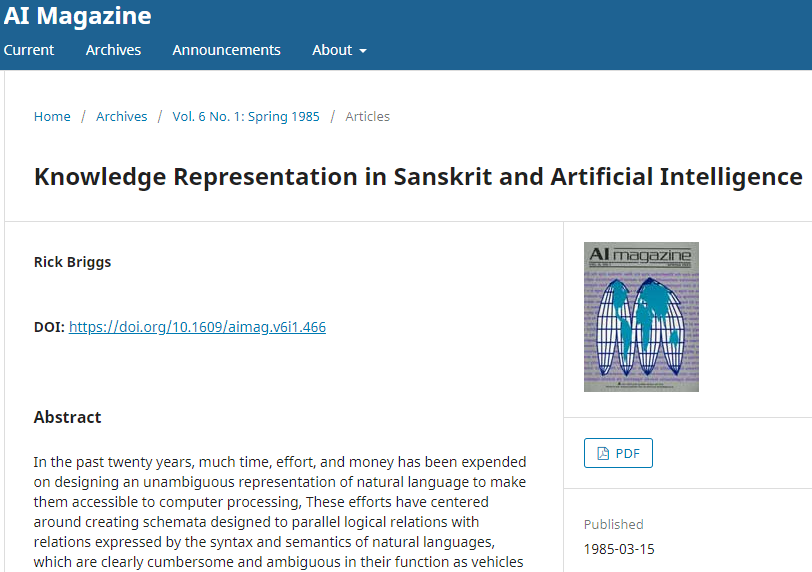A post is being widely shared on social media claiming that a report by a NASA scientist says that America is going to create 6th and 7th generation supercomputers based on the Sanskrit language. The post even claims that the project deadline for 6th generation supercomputer is 2025 and for the 7th generation supercomputer is 2034. Let us fact-check the claim made in the post.

Claim: According to a report by a NASA scientist, USA is going to create 6th and 7th generation supercomputers based on Sanskrit language by 2025 and 2034 respectively.
Fact: There is no evidence to show that a report by a NASA scientist says that America is working on 6th and 7th generation supercomputers based on Sanskrit language. A 1985 paper published by Rick Briggs just says that Sanskrit could be used for knowledge representation in artificial intelligence research; it doesn’t talk about any supercomputers based on Sanskrit language for America. According to an Associate Professor from IIT Kharagpur, “Sanskrit, like any other natural language such as English or Hindi, is definitely not directly usable as a programming language. These rumours are detrimental to the respect that the ancient science of Vyakarana genuinely deserves.” Hence, the claim made in the post is FALSE.
This claim about a report by a NASA scientist that says that America is undertaking projects to create 6th and 7th generation supercomputers based on Sanskrit language, is circulating on social media at least since 2016. The posts can be seen here and here.
When we searched on the official website of NASA regarding the claim made, we could not find any information that confirms such a project by NASA is under the works. The official website of the NASA Advanced Supercomputing (NAS) Division also does not say anything about such a project. There are no recent credible news articles that say that such a project or a report by a NASA scientist exists.
In relation to Sanskrit language and NASA, there was a paper published by Rick Briggs in the ‘Artificial Intelligence’ magazine in 1985, titled, “Knowledge Representation in Sanskrit and Artificial Intelligence.” However, there was no mention of any project by the US to create 6th and 7th generation supercomputers based on the Sanskrit language by 2025 and 2034 respectively. The paper just shows how can natural languages like Sanskrit with more than 1,000 years of history, can be made accessible to computer processing in relation to Artificial Intelligence.

The then Union Home Minister Rajnath Singh (talking about the utility of Sanskrit) said in 2015 (according to reports here and here), “even NASA, while building a supercomputer, had said that Sanskrit was the most suitable language for it.” But there was no mention of any project by the US to create 6th and 7th generation supercomputers based on the Sanskrit language by 2025 and 2034 respectively.

An IIT Professor rubbished the claims circulating on the internet that Sanskrit is being studied in secret NASA laboratories, by calling them ‘just rumours’. Swarajya Magazine once asked Dr Pawan Goyal, an Associate Professor at IIT Kharagpur about the Rick Briggs paper on Sanskrit in the Artificial Intelligence magazine. He replied, “That was a very interesting article, which focused on how concepts from Indian grammatical tradition could be used for knowledge representation in artificial intelligence research. The article itself is rigorous and interesting, but it spread on the Internet as uncontrollable disinformation. At some point it was quoted saying that Sanskrit is the ultimate programming language, studied in secret NASA laboratories. These are just rumours. Sanskrit, like any other natural language such as English or Hindi, is definitely not directly usable as a programming language. These rumours are detrimental to the respect that the ancient science of Vyakarana genuinely deserves.” Dr Pawan Goyal is a computer scientist who is working to make Sanskrit texts more accessible with the help of automated computational processing techniques.

To sum it up, there is no evidence to show that a report by a NASA scientist confirms an American plan to create 6th and 7th generation supercomputers based on Sanskrit by 2025 and 2034 respectively.



